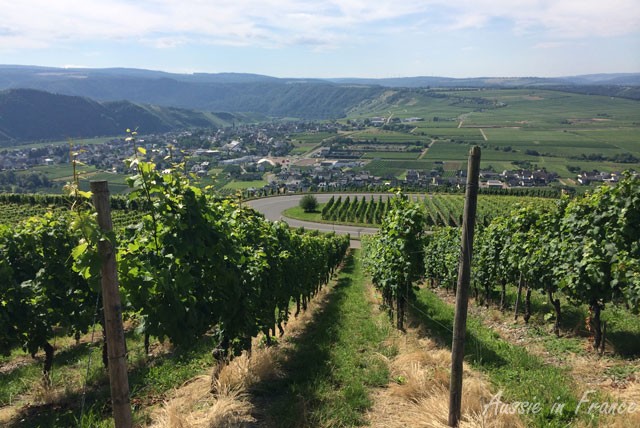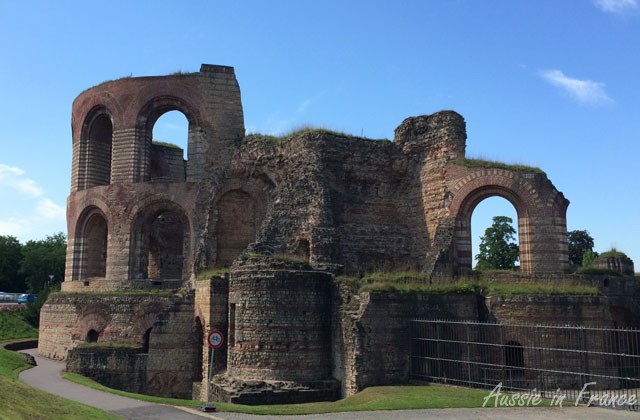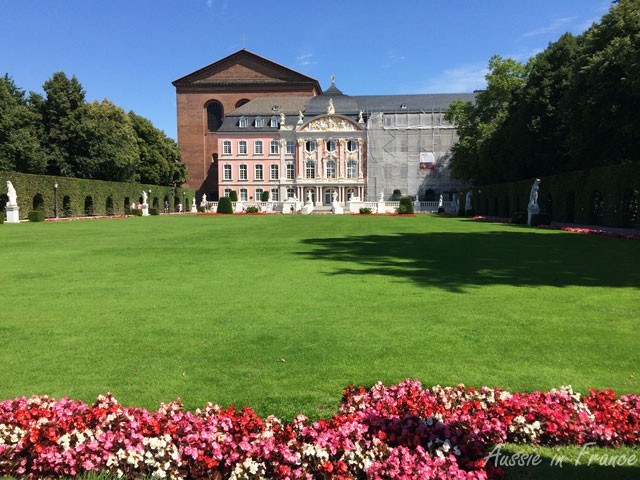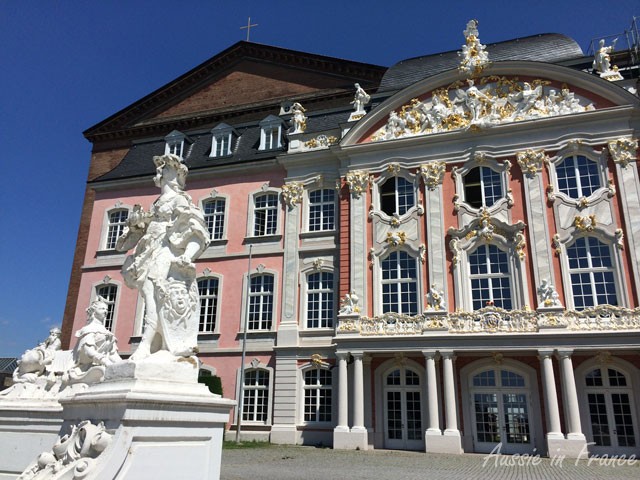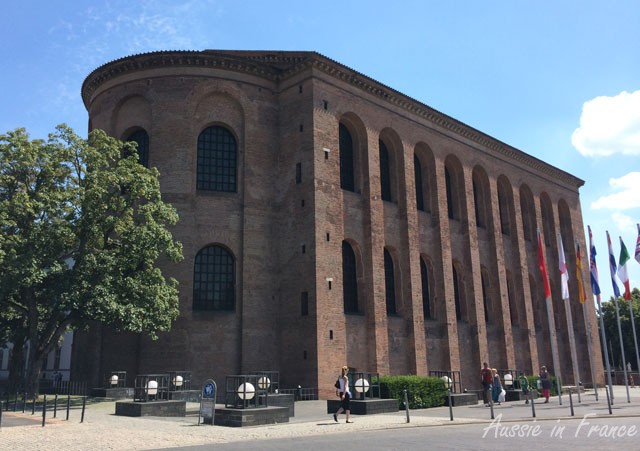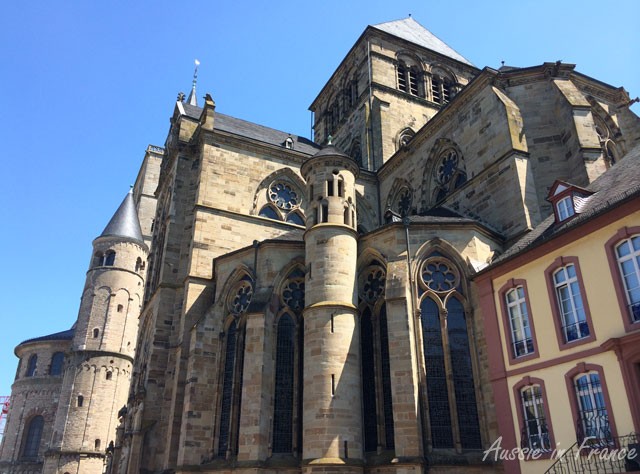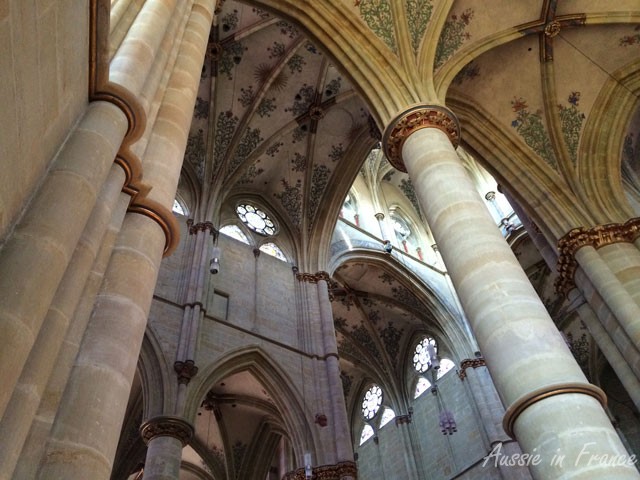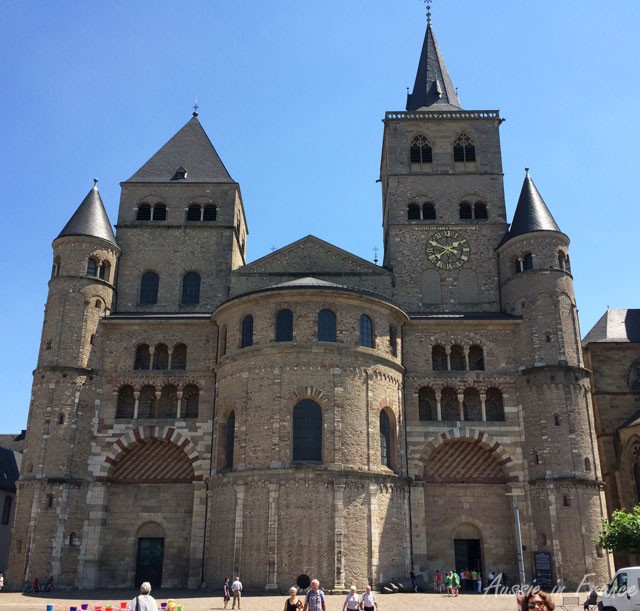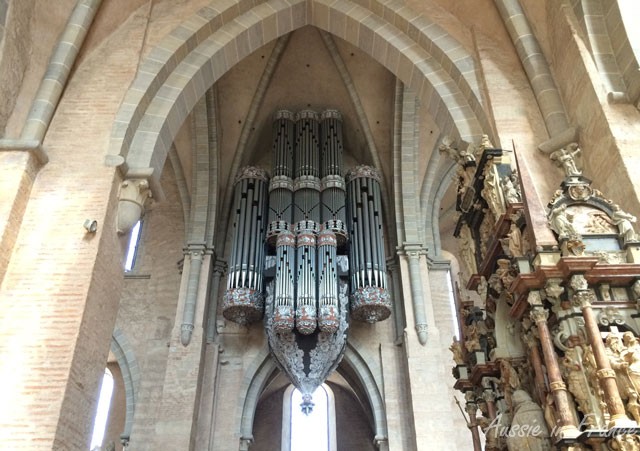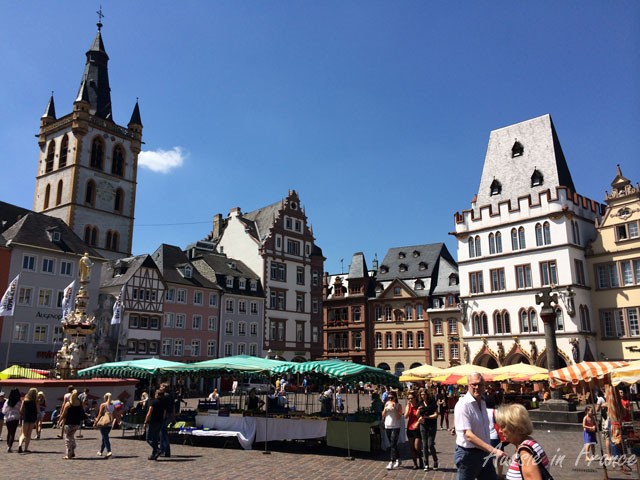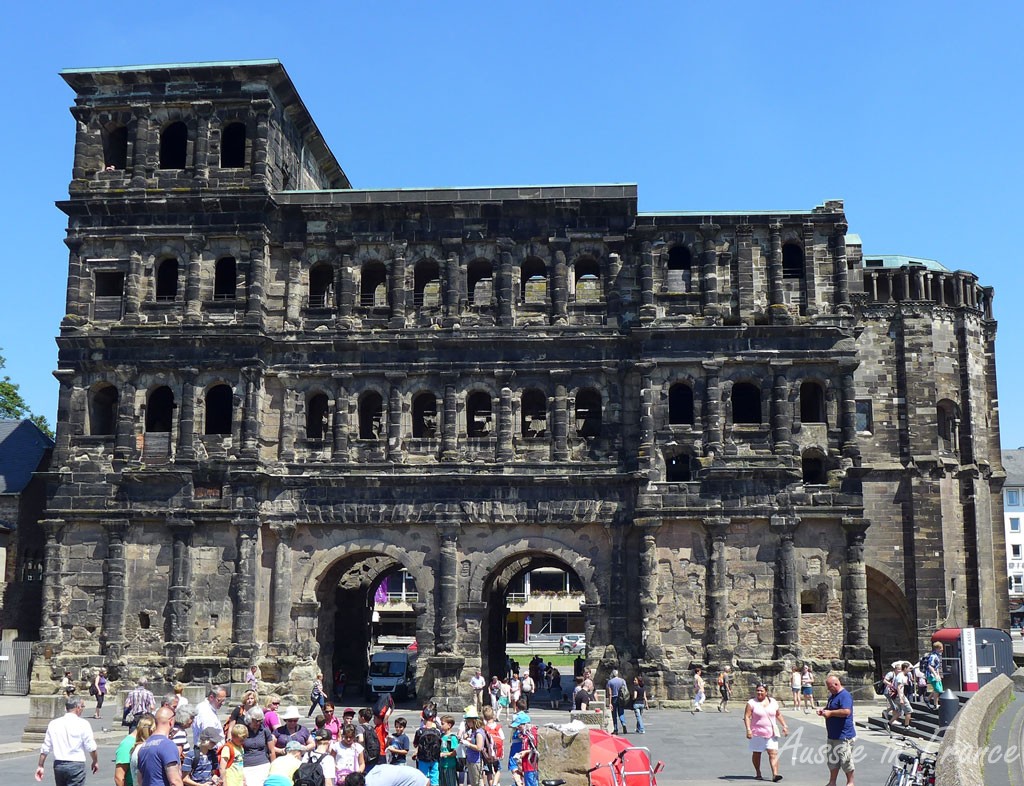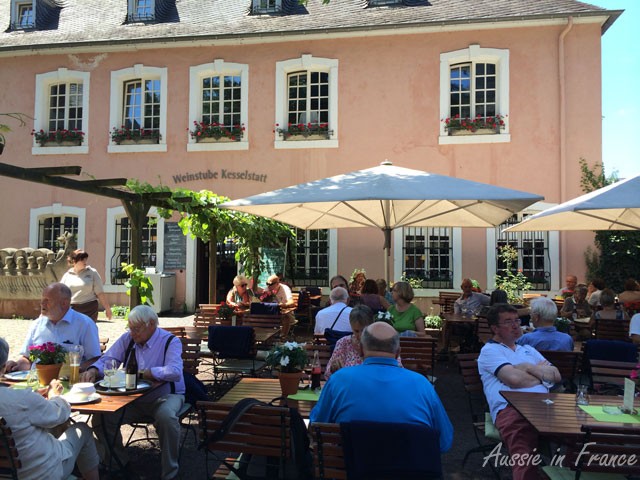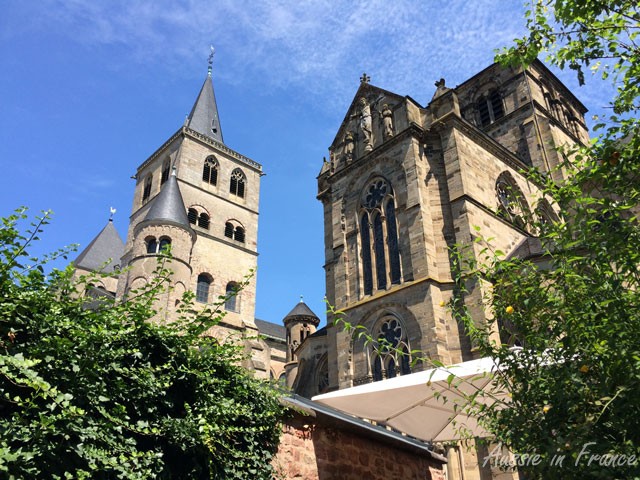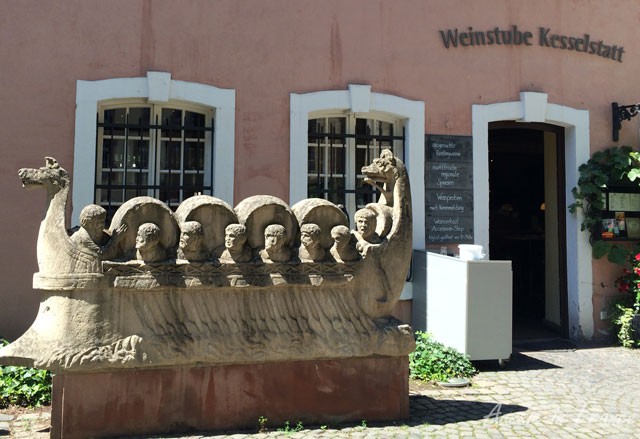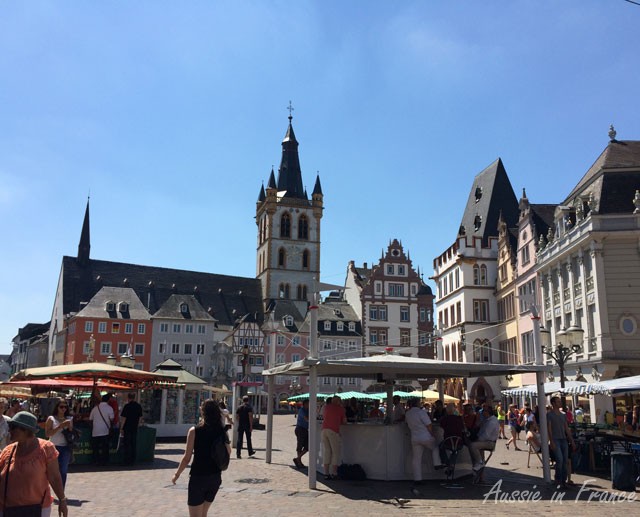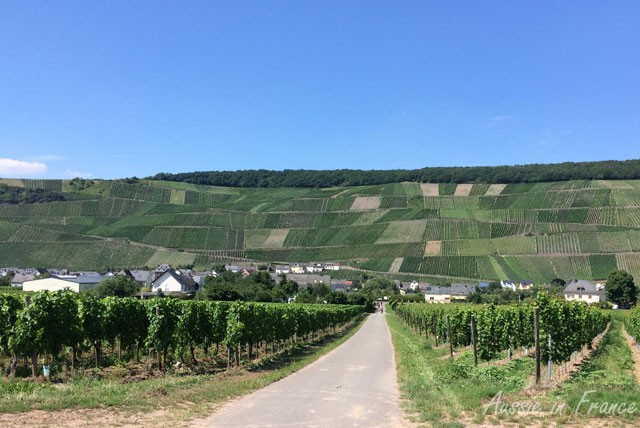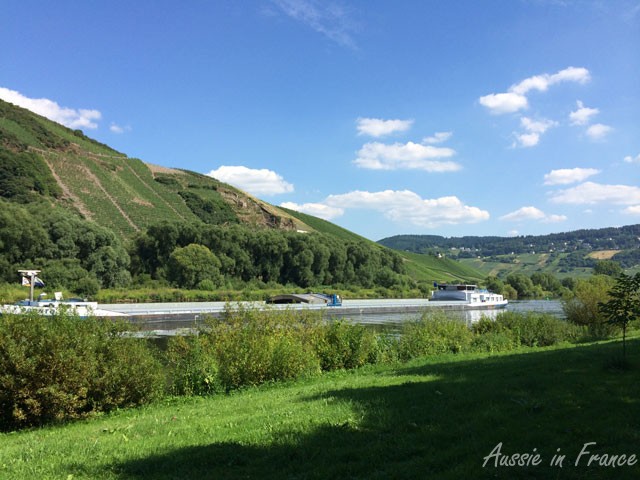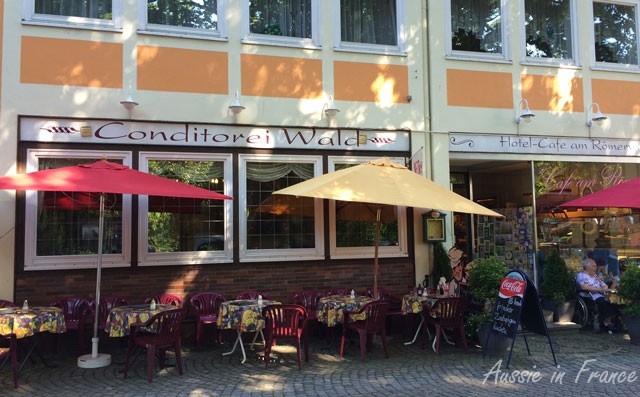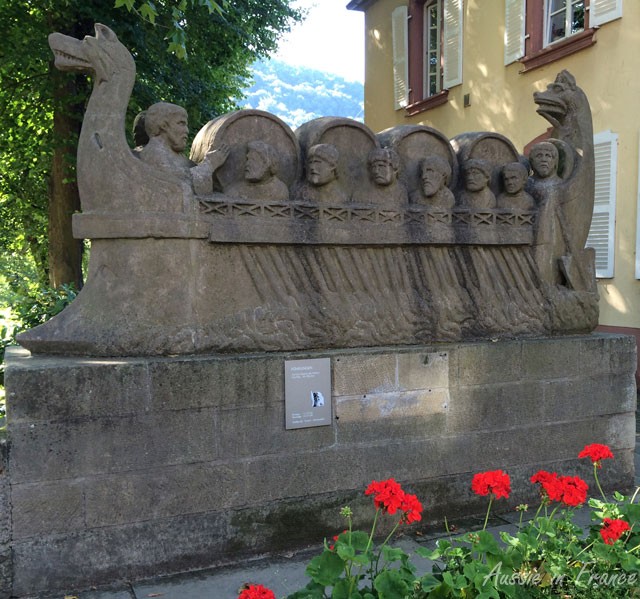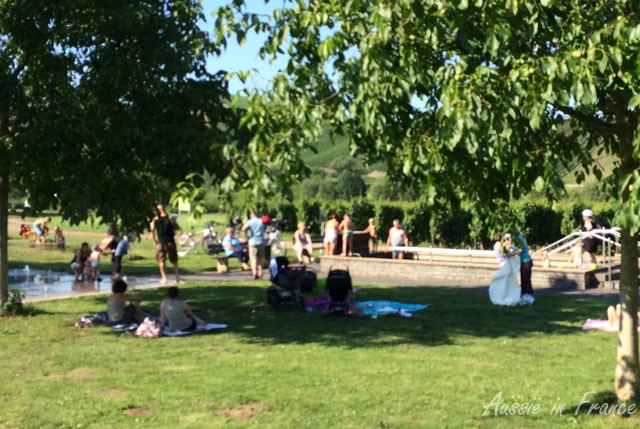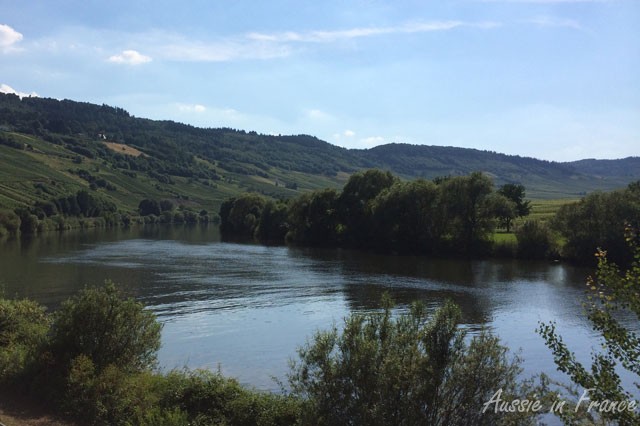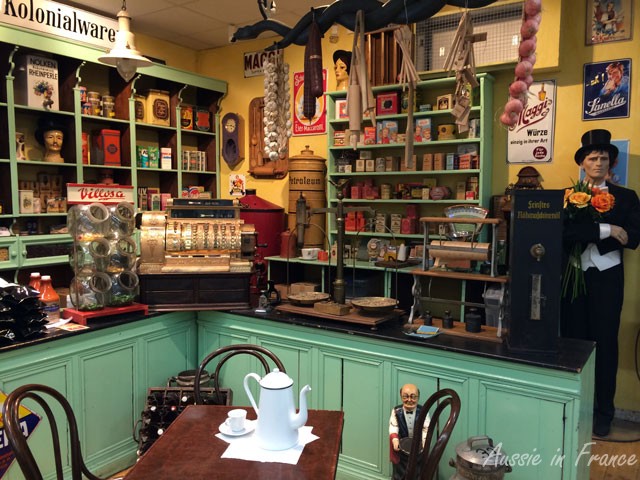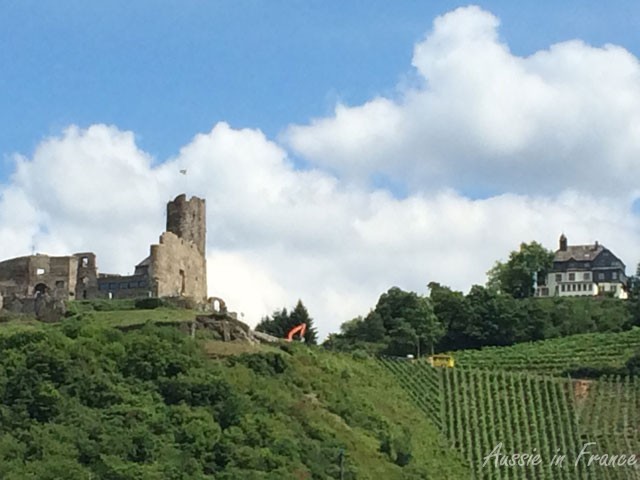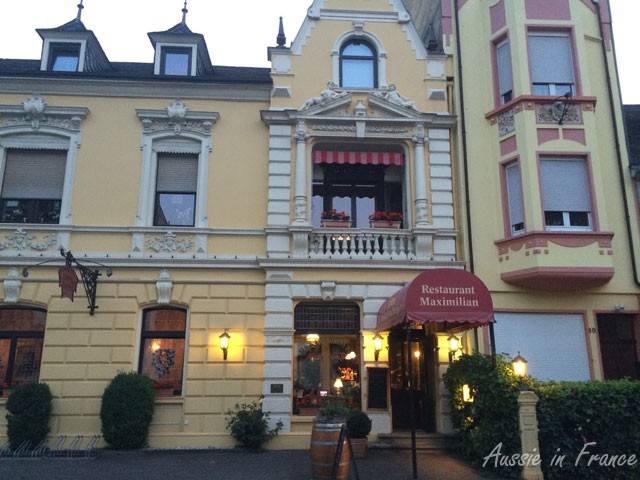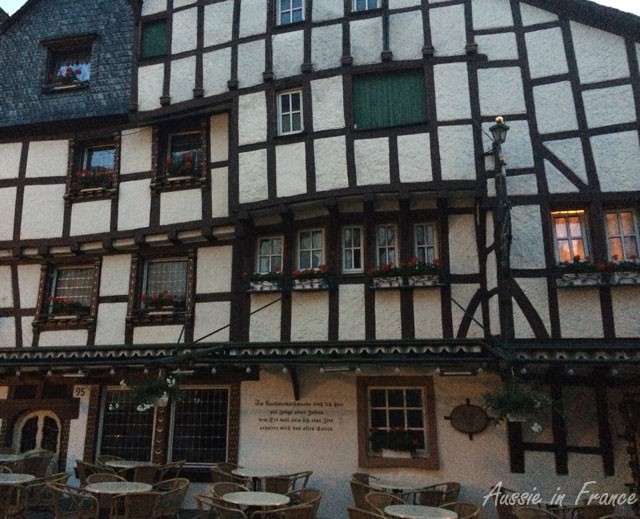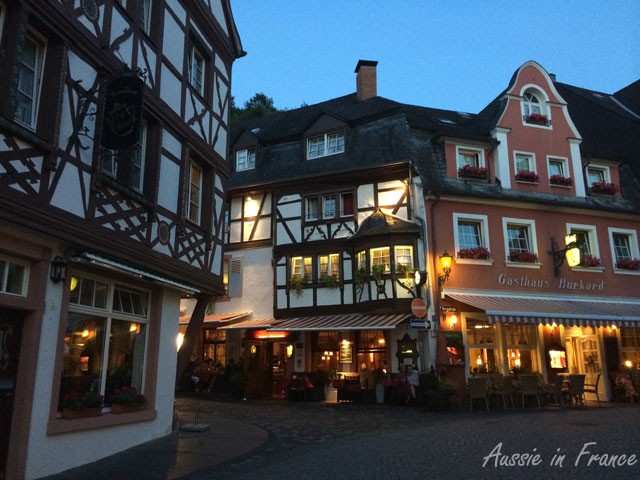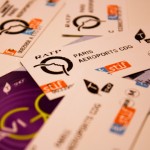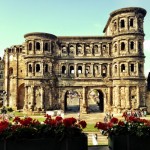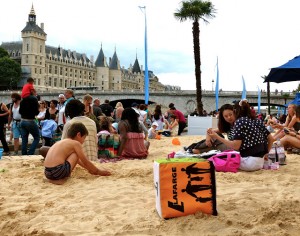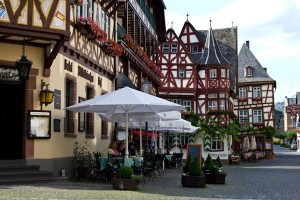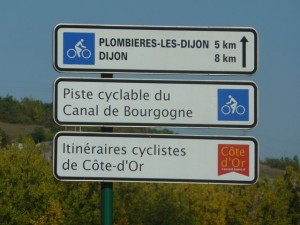It’s the last day of our cycling holiday in Germany and we’re going to visit Germany’s oldest town – Trier – then cycle from Thörnich to Neumagen-Dhron. We’re not cycling around Trier itself because the bike paths in and out of the city look as though they go through industrial areas. On the way, we drive up a winding road near Piesport to have a view of the Moselle below.
We’ve been to Trier before, during a wonderful holiday in Luxembourg over 15 years ago but it was just for dinner one night and the only thing we remember, apart from an excellent entrecôte, is the Porta Nigra which today is the largest Roman city gate north of the Alps.
As we approach the centre, we see the ruins of three Roman baths. It really is astonishing that Jean Michel has no recollection of them at all, not so surprising for me though because I have such a terrible memory for places.
We park in an almost empty parking place not far from the baths and within easy walking distance from the centre through a lovely garden, the Palastgarten. From what I can work out, the parkschein (parking metre – see all this useful vocab I’ve learnt) is only for tourist buses. As there are other cars parked there, I assume it’s free if you’re not a bus.
After a welcome drink at the Zeitspuring Café which would have a perfect view of the almost obscenely baroque 17th century Kurfürstliches Palais, if it wasn’t being refurbished, we head for the Neolithic-looking Constantine Basilica behind it.
A basilica in the Roman sense, it was actually the 67 m long throne hall of the Roman Emperor Constantine. Today, it is used as a Protestant Church.
Next on the list are two churches, sort of interwoven. The 13th century Gothic Liebfrauenkirche is one of the most important early Gothic cathedrals in Germany but doesn’t look anything like a French Gothic cathedral with its little towers and no flying buttresses.
Inside it certainly looks Gothic though, except for the painted vaulting.
When we enter the 4th century Romanesque Cathedral next door, we’re pleased we saw the other one first because it would have paled in comparison otherwise!
It has several very eclectic features including a most unusual organ. Even with our binoculars, we can’t work out exactly what it’s made of. It looks like mother-of-pearl to me.
After leaving the church, we turn left towards marktplatz which is very crowded and lined with colourful façades.
From the square, you can see the Porta Nigra, built of grey sandstone in 200 AD. It acquired its name (black gate) in the Middle Ages because of its colour. It originally consisted of two four-storied towers and was one of four. I have a vague memory of it …
By then we are hot – it’s 33°C – and hungry so go back to a shady outdoor restaurant I noticed on the way. There is a card on the table explaining in English and German that you go inside and buy your drinks and order your food. You are given a flag with a number that you put in the flowerpot on your table and the waitress brings your order. Just like an Australian pub, says Jean Michel.
He comes back with two different glasses of Riesling and I go and order the pork steaks and summersalat. The restaurant also has a great view of the two churches – provided you know about the second terrace, which we only discover after we finish.
Just next to the Kesselstadt Weinstube is an unusual stone monument of a Neumanger weinschiff, or wine boat.
After lunch, we decide we’ve seen enough of Trier so return to the parking lot where we have a 10 euro parking ticket. I obviously misinterpreted the information!
We drive to Thörnich wondering why on earth we’re going to cycle in the heat. “Where are my binoculars?”, I suddenly cry. I look everywhere but have no recollection of when I last saw them. I phone the weinstube, having checked how to say binoculars in German (fernglas) but no one has found them. Ah, you were luckier with your sunglasses, I say, just in case Jean Michel is tempted to mention how often I lose things.
It’s very hot going, mainly through vineyards, with some occasional shade along the edge of the Moselle. Also, I’m feelilng very depressed about the binoculars.They were a present from my children and Jean Michel and are very good Leica binoculars. I try to put them out of my mind.
We arrive at Neumagen-Dhron which we didn’t even enter yesterday because it looked most unpromising and discover it’s actually a pretty little village with lots of places to eat, in particular an eis café.
Just in front, what do we see, but another weinschiff monument with an explanation in approximate English. It’s a winegrower’s tombstone, with 4 wooden wine kegs. I have to wait until a French cyclist finishes his mobile phone conversation before I can take the photo.
On the way back, I stop to take a photo of what looks like a children’s paddling pool. I later learn it’s a kneippbad after Dr Sebastian Kneipp, who may be one of my ancestors. It’s a therapeutic pool that you are supposed to wade through like a stork. What a pity I don’t know!
We’re hotter than ever when we get back to the car. I check the car for my binoculars again but still no sign of them.
After shopping in a little supermarket we found earlier that has the most surprising coffee shop at the entrance we go back to our flat.
We’re sitting out on the balcony experiencing end-of-holiday blues while drinking the wine we bought in Bernkastel the day before. It hasn’t been a real holiday, says Jean Michel. We haven’t had any time for relaxation. I can’t agree more. We talk about why. I think that we were expecting the same magic as our Danube trip last year but Jean Michel doesn’t agree.
However, we both agree that when everything is planned ahead of time, it’s less stressful. But we wanted to follow the good weather, which we accomplished pretty well.
Let’s not stay in for dinner, says Jean Michel. Let’s go and find something in Bernkastel. On the way we find a hotel with a garden restaurant. We have rumpsteak (not schwein!) and the waitress speaks real English which is somewhat of a relief.
After dinner we walk over the bridge to the old city and discover that there is another long street with lots of beautiful houses (and restaurants) we missed the day before. By now our end-of-holiday blues have disappeared.
It’s next morning and we set out early on our 6 ½ hour drive to Blois. As we’re packing up the car, I have another look for my binoculars. And there they are! They’ve half fallen into the top zippered part of my bike bag that I only use when we have a picnic. When we got back to the car after Trier I must have put them on the back seat on top of the bike bag and because both the binoculars and the bag are black, I didn’t see them.
Now I’m ready for home!




